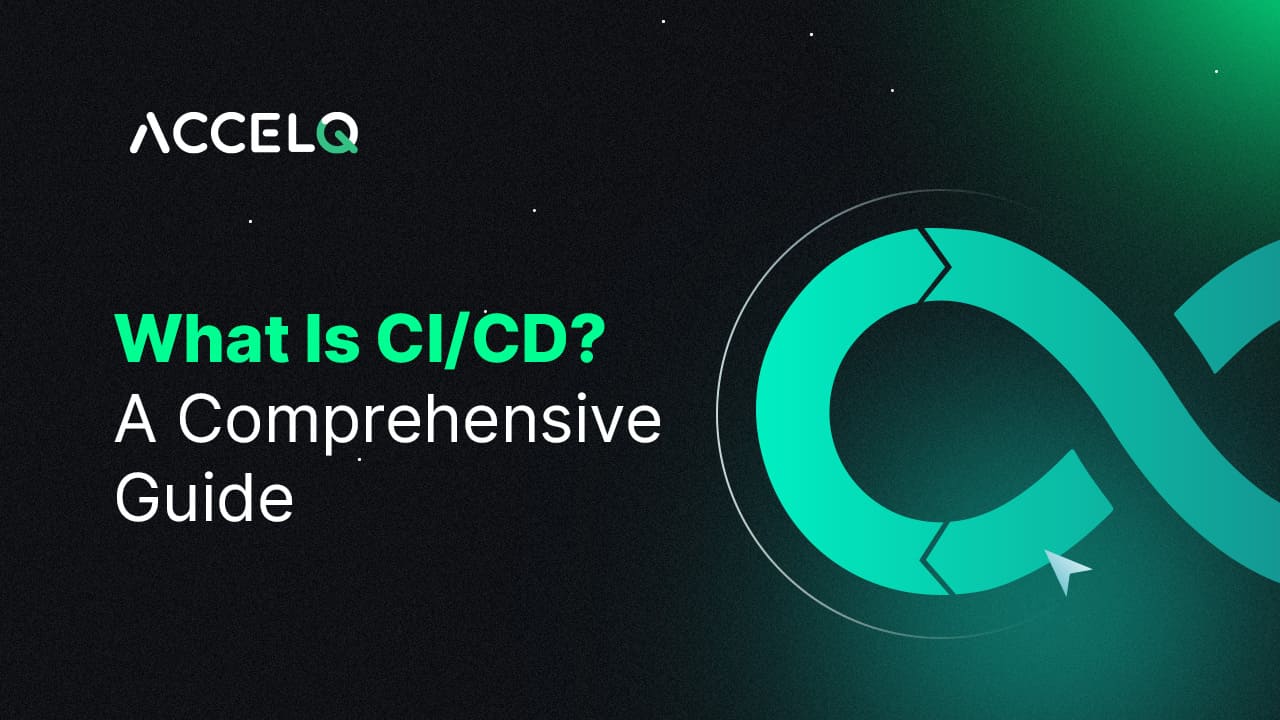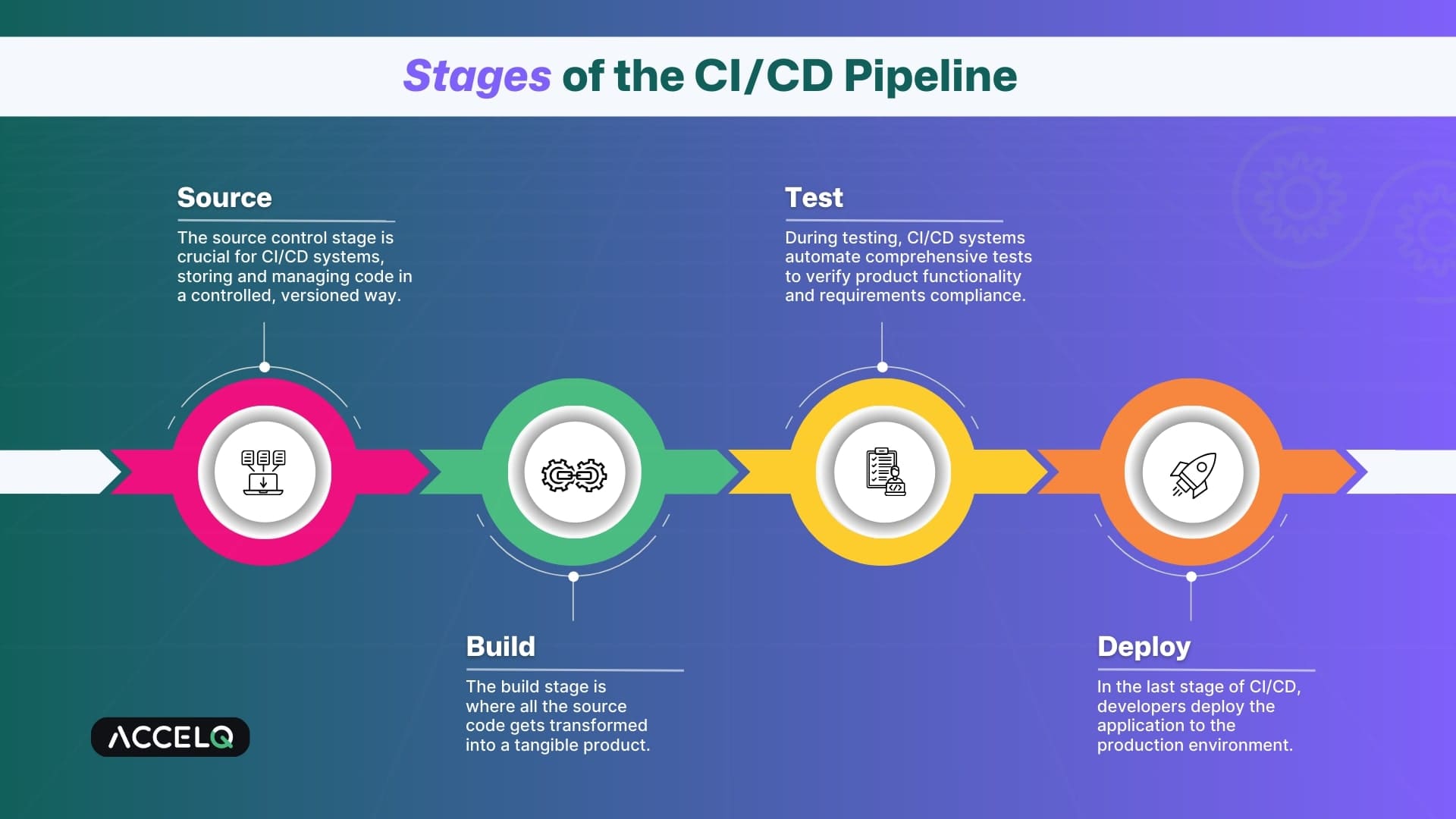What Is CI/CD Pipeline? A Comprehensive Guide

Today, every software development team relies on continuous delivery and a continuous integration pipeline to enable rapid and reliable software delivery. CI/CD systems help automate and streamline the process of building, testing, and deploying software. They ensure that code changes are consistently tested and deployed reliably and efficiently. But what is CI CD pipeline? What are its benefits? And how does it aid in improving the software development lifecycle?
What is Continuous Integration?
Continuous integration (CI) streamlines the development process by automating the integration of code changes from various contributors into a single repository. This approach enables developers to merge and test changes early and often. As changes are committed or merged, CI triggers an automatic build, facilitating immediate testing and integration.
With continuous integration, teams can easily identify and fix errors and security issues early in the development lifecycle. Since changes are merged continuously, CI minimizes the possibility of code conflict. Through faster feedback, it verifies the quality of code before integration while boosting team agility.
What is Continuous Deployment?
Continuous Delivery (CD) focuses on the regular and predictable release of high-quality products. Using automated tools, CD helps move code from the source code repository to production. This helps minimize delays at hand-off, thus reducing team frustration and customer dissatisfaction.
CD usually works in conjunction with CI to automate infrastructure provisioning and application release. Once the code is tested, CD ensures it is packaged with everything it needs to deploy to any environment at any time.
What are the benefits of CI/CD?
In today’s highly competitive world, CI/CD offers several benefits:
- Streamlines feature integration, thus improving the quality and stability of the end-to-end product.
- Accelerates releases, allowing organizations to meet their time-to-market deadlines.
- Improves code quality through automated integration, development, and frequent feedback loops.
- Provides a single source repository, offering teams much-needed visibility into source code, database structure, libraries, version control, etc.
- Enables frequent check-ins, minimizing build issues and ensuring code changes have fewer unintended consequences.
- Ensures a stable testing environment with test parameters and dependencies of the application clearly defined and documented.
- Maximizes visibility into the software development project and ensures all members have clarity on their roles and responsibilities.
Stages of the CI/CD Pipeline
The CI/CD pipeline primarily consists of 4 stages:
- Source: The source or version control stage forms the foundation of CI/CD systems. It stores and manages code in a controlled and versioned manner. When code is created or updated by members on local machines, it is pushed to a version control system. This ensures every edit made to the code is committed and tracked.
- Build: The build stage is where all the source code gets transformed into a tangible product. CI/CD systems help execute this source code in the production environment. In this stage, developers take on tasks like resolving dependencies and bundling assets.
- Test: In the test stage, CI/CD systems conduct comprehensive automated testing to ensure the product meets all functional and non-functional requirements. It is at this stage that the quality of the build is thoroughly examined before it is delivered to end-users.
- Deploy: In the final stage of the continuous integration and continuous delivery pipeline, developers release the application into the production environment. Here, the final product is released to end users in an automated manner.
CI/CD KPIs to Focus On
Continuous delivery and continuous integration aren’t just about automating builds and tests. Teams must also continuously measure and track metrics across the CI/CD pipeline.
To that end, here are the five key performance indicators (KPIs) teams must focus on:
- Development frequency: The development frequency KPI indicates the rate of feature development. It enables insight into how regularly new capabilities and features are rolled out. Tracking and measuring this metric can help teams improve software development efficiency.
- Deployment time: The deployment time metric provides insight into the time taken to roll out deployments. This metric can help teams improve their deployment speed and better plan their releases.
- Failure rate: The failure rate KPI sheds light on the frequency of failed builds. It also delivers insight into the number of times deployments result in outages or other issues.
- Lead time: The lead time metric provides valuable details about the efficiency of the development process. It also indicates the status of meeting the users’ evolving demands.
- MTTR: Mean time to recovery (MTTR) measures the period between when a service fails and is up again. MTTR gives information about the time required to solve issues and get back on track after a failed deployment or change.
CI/CD Implementation Best Practices
The right approach to continuous delivery and continuous integration can transform development outcomes. Here are some CI/CD implementation best practices to keep in mind:
- Commit early and often: If you want to succeed with CI/CD, you must ensure your source code, configuration files, scripts, and libraries are in source control. Regular and early commits not only help in tracking every change right from the start but also initiate automated tests with each commit. This practice fosters better collaboration and significantly lowers the risk of merge conflicts.
- Communicate regularly: In addition to committing frequently, it is important to communicate frequently. It ensures that everyone shares their changes with the rest of the team. It also creates a culture of trust and transparency and clarifies roles and responsibilities.
- Use the right tools and frameworks: Investing in the right CI/CD tools and frameworks is extremely critical. The right CI/CD systems can ensure your builds are green and clean. They can also allow teams to deploy the same build to each setting for testing, increasing the team’s confidence in the build artifact.
- Ensure rapid feedback: Ensuring rapid feedback is a great way to avoid building on bad foundations. By keeping code in a constantly releasable state, you can address issues as they arise and roll out fixes quickly. Rapid feedback also helps build a constructive team culture and ensures the entire team takes responsibility to prevent a build from failing.
- Streamline testing: While CI/CD accelerates product delivery, maintaining balance requires frequent testing.This can help get feedback as early as possible while delivering alerts on any obvious issues introduced by the latest change.
- Monitor and measure: Successful continuous delivery and continuous integration also require frequent monitoring. Make sure to analyze the metrics collected by your CI/CD tool to identify issues and scope for improvement. You can use the tool to track the number of builds triggered per week, how your pipeline infrastructure is used, and the speed of deployment.
- Learn from failure: Fixing failing builds can be disheartening, especially if they happen because of trivial errors. But instead of losing hope, teams should learn from failures. For example, they should build and run an initial set of tests locally before they share their changes.
About ACCELQ
Continuous delivery and continuous integration enable a standardized approach to software development. CI/CD systems ensure proper integration of changes made by different team members. It also helps teams isolate faults, improve code quality, and accelerate release cycles.
By breaking down complex development tasks into smaller chunks, CI/CD systems promote better maintainability. Different members have the necessary insight into code changes, ensuring deep visibility into product quality and developer efficiency.
In Summary
CI/CD is integral to effective software development. The CI/CD pipeline helps create a streamlined, automated pipeline and enables developers to deliver high-quality software changes quickly and reliably.
To strengthen the CI/CD pipeline, you must commit early and often. You must communicate regularly to ensure rapid feedback and streamline testing. You must also invest in the right CI/CD tools to continuously monitor and measure the pipeline and plan for improvements wherever possible.
Discover More
 Build a Jenkins CI/CD Pipeline: Step-by-Step Guide
Build a Jenkins CI/CD Pipeline: Step-by-Step Guide
Build a Jenkins CI/CD Pipeline: Step-by-Step Guide
 Scalable CI/CD Solutions with Azure DevOps for Enterprise Applications
Scalable CI/CD Solutions with Azure DevOps for Enterprise Applications

































